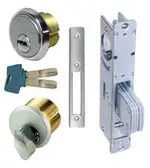CrustyClad, thank you for cleaning the object more thoroughly, and making and posting additional photos.
First... I'm now certain the object is made of brass -- even though it looks copper-ish. Very strong soil-acidity can leach Zinc molecules out of the surface of brass (which an alloy of zinc and copper), resulting in the suface of the brass looking copper-ish. The test of that is to make a small scrape on the surface, and see if there's a yellow color just below the surface in the scrape.
The new photos show details which at least somewhat indicate NOLA-Ken may have been on the right track (except for the "cannonball" attribution). The newly-visible details somewhat indicate the object might be a part of a World War One/Two era US artillery shell fuze.
I've had to keep saying "somewhat" in the writing above because I'll have to do some additional research ...and because I need at least two more photos, and an answer to another question.
On the sloping outer edge of the object, I seem to see an oval-shaped hole, which may have iron inside it (or perhaps that's just concretion in the hole). CrustyClad, is there only one such hole on the sloping edge, or two such holes there? If possible, please post a photo showing a "straight-down-on-it" view of the object's upper side.
Also, please post a photo showing a "90-degree sideview" of the object. By that, I mean, set the object on the very edge of a table, then lean down and shoot a perfectly-horizontal view of the object -- not even slightly "above" the object. That will show us how much the center of the object sticks up above the rest of it.
Then, I will send all your photos to a good friend who was an officer in a US Navy Explosive Ordnance Disposal unit, to see if he recognizes the object as a 20th-Century artillery shell fuze. (I know civil war fuzes really well, but not so much about 20th-Century ones.)
 what it could be, but in the same area i was also getting large cast iron or steel fragments, I wish I would of kept some of the iron pieces too.... These pieces were all found out in the middle of a large pasture...
what it could be, but in the same area i was also getting large cast iron or steel fragments, I wish I would of kept some of the iron pieces too.... These pieces were all found out in the middle of a large pasture...
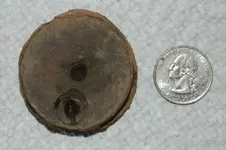
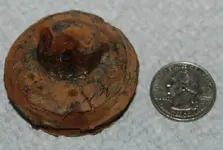
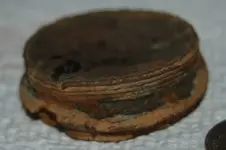
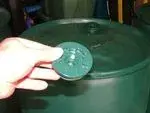
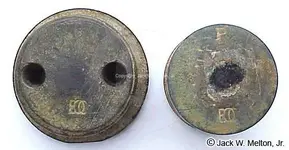
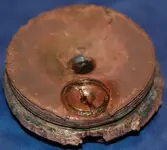



![emtek_modern_deadbolt_stainless[1].webp](/data/attachments/510/510705-1e1a7a9dae554c62a3a6b43752d317e3.jpg?hash=HHvVc10f2K)

